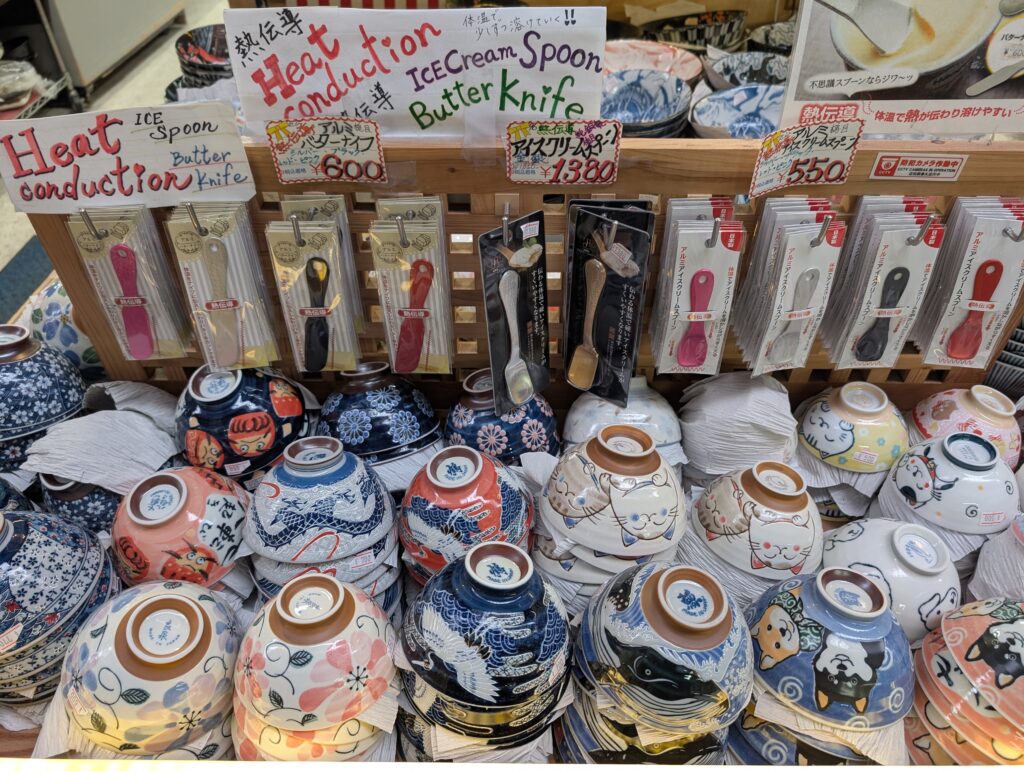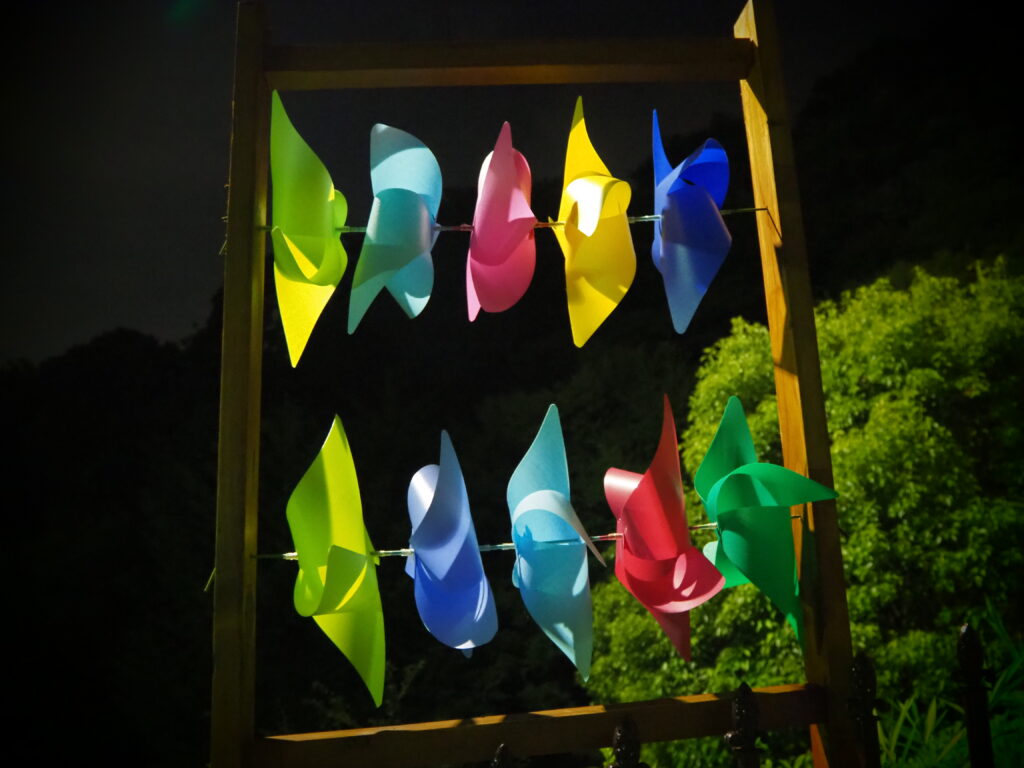Osaka is known as “the nation’s kitchen” and “the city of kuidaore” (eating until you drop). It became a hub for trading ingredients from all over Japan. With this rich background, Osaka has nurtured a diverse and vibrant food culture.
Let me introduce Douguyasuji, which supports Osaka’s culinary traditions.
From kitchen equipment, tableware, food replicas, to traditional shop curtains (noren), just browsing here fills you with excitement.
Why not look for souvenirs in Douguyasuji, where even professional chefs come to purchase their tools?
Table of Contents:
A historical overview of Doguyasuji
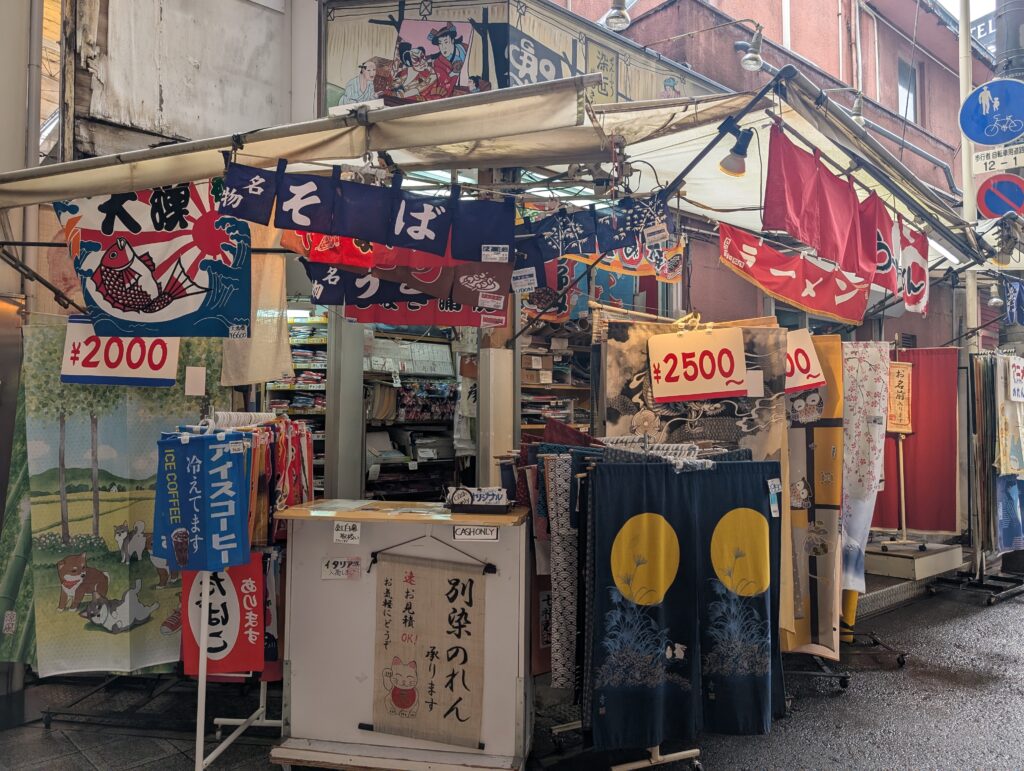
The history of Doguyasuji, a famous shopping street in Osaka, is deeply rooted in the city’s culinary and cultural traditions. Here’s a brief overview:
- Origins: Doguyasuji’s beginnings trace back to the late 19th century during the Meiji era. It started as a pathway lined with shops selling second-hand tools and miscellaneous goods, catering to the needs of local residents and businesses.
- Transformation: By the early 20th century, the area evolved into a hub for professional kitchen tools and equipment. This shift was driven by the growing demand from Osaka’s thriving food industry, as the city was known as “Japan’s Kitchen.”
- Post-War Revival: After World War II, Doguyasuji faced challenges due to the destruction caused by air raids. However, the community rebuilt the area, and it regained its status as a vital center for culinary tools and supplies.
- Modern Era: Today, Doguyasuji is a bustling shopping street with a wide range of stores offering everything from traditional Japanese knives to modern kitchen gadgets. It attracts both professional chefs and cooking enthusiasts from around the world.
Doguyasuji’s history reflects Osaka’s resilience and its deep connection to food culture. It’s not just a shopping street but a symbol of the city’s dedication to culinary excellence.
Things to Do at Doguyasuji

Douguyasuji is a 150-meter-long shopping street lined with approximately 50 shops.
This small arcade is like a treasure chest, where you can discover beautiful Japanese tools, traditional tableware, and kitchen utensils.
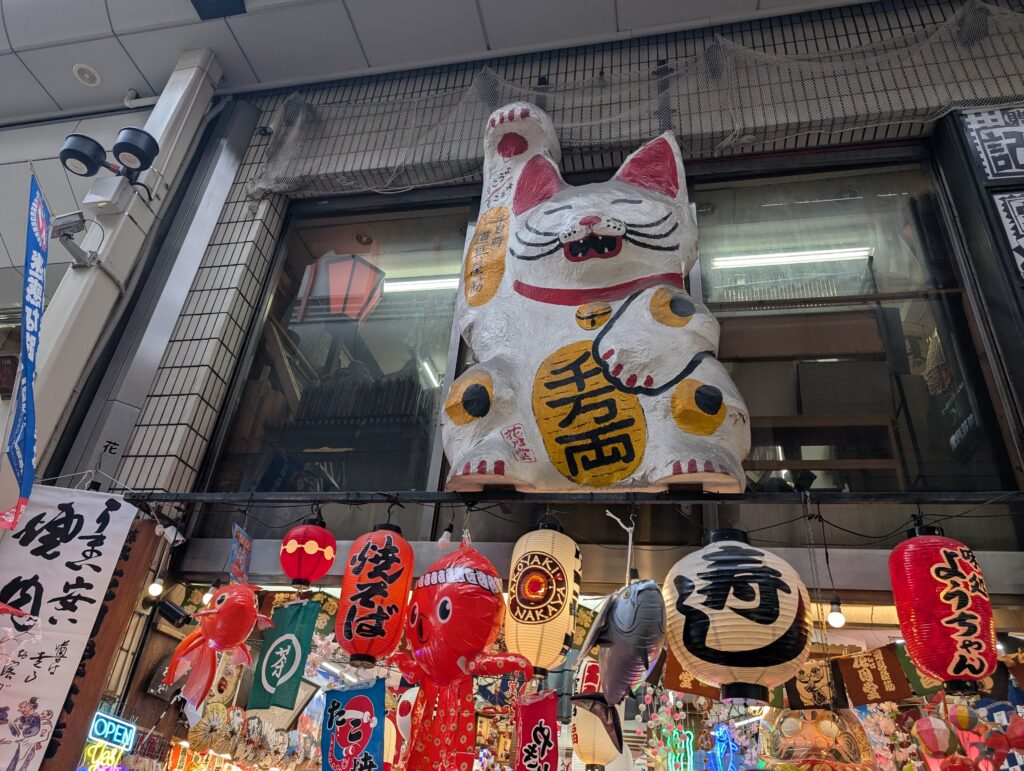
Look! It’s a giant Maneki-Neko!
Known as the “welcoming cat,” this beloved figure is thought to bring good luck and prosperity to its owner. You’ll often see it in shops and restaurants, inviting more customers with its charm. Interestingly, it’s said that Maneki-Neko figures with paws raised higher than their ears are believed to attract even more customers compared to those with lower paws. Quite fascinating, don’t you think?
The storefronts are adorned with numerous lanterns, each featuring words and designs that evoke the charm of Japan, such as “yakisoba,” “sushi,” “takoyaki,” and “coffee shop.” These lanterns not only captivate passersby but also imbue the entire street with a warm, traditional Japanese ambiance.
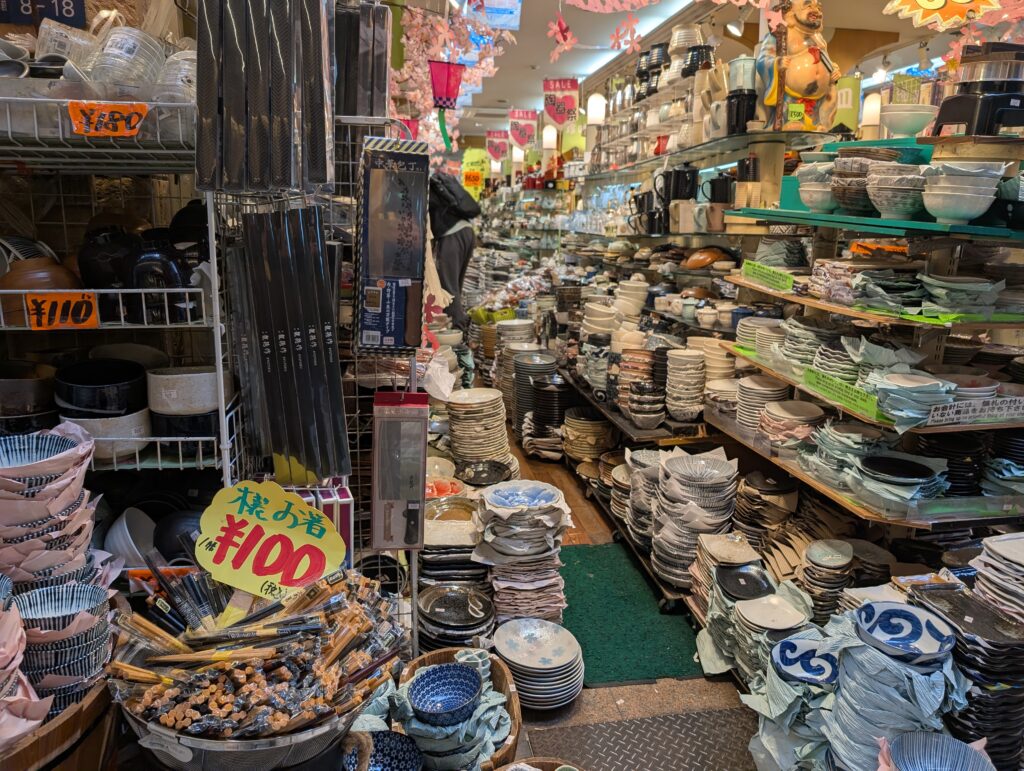
The shelves are packed with tableware, mainly traditional Japanese dishes, and there’s so much that it even spills onto the floor. Everywhere you look, you’ll find beautiful pieces displayed in every available space.
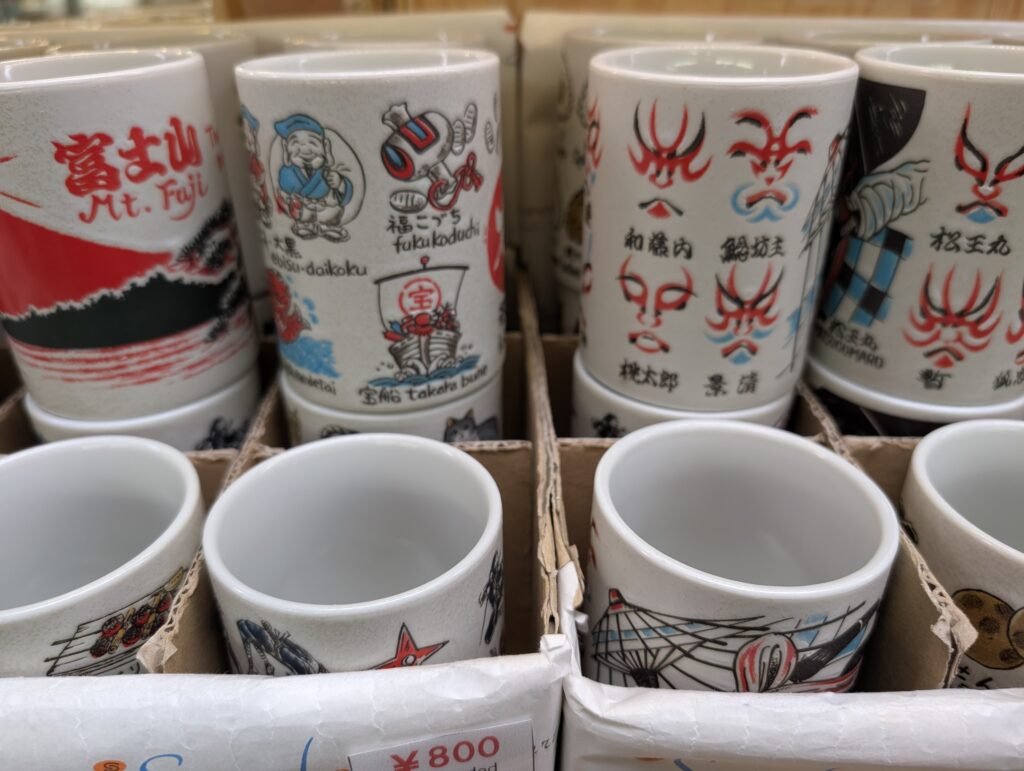
I found a stylish yunomi (Japanese teacup), just like the ones you’d see at a sushi restaurant. The designs include Mount Fuji, kabuki, ninjas, and the Seven Lucky Gods, making it a perfect souvenir from Japan. Each one costs JPY 800.
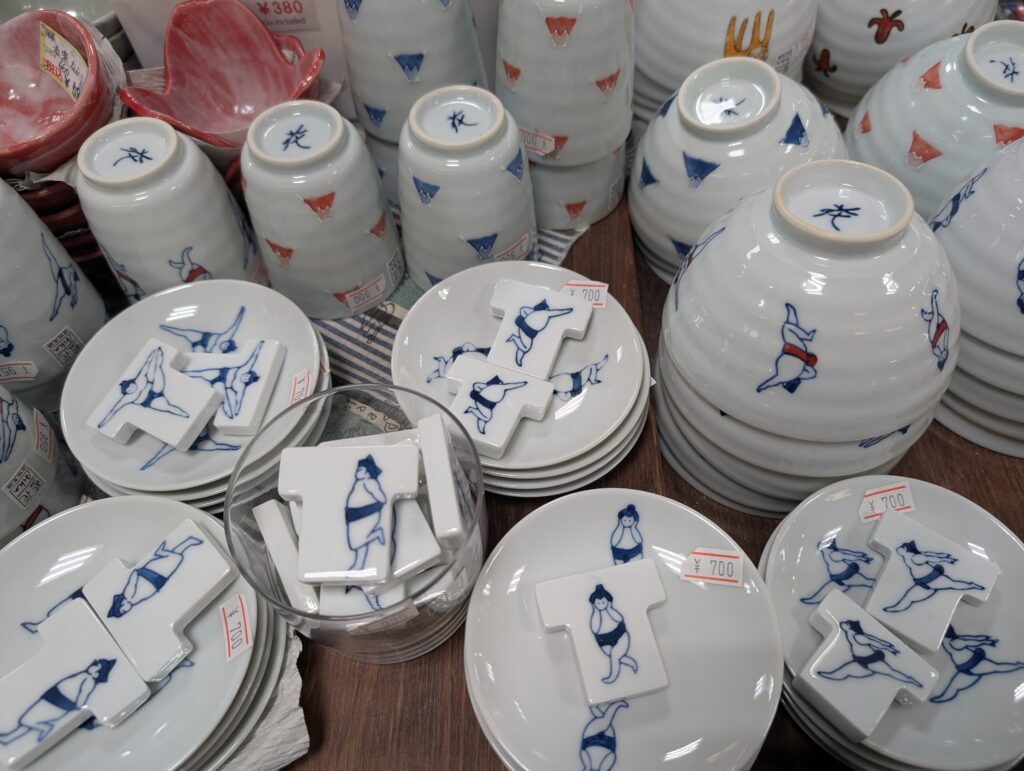
These are plates, rice bowls, and chopstick rests featuring sumo-themed designs. You could serve pickles on the small plates, scoop fluffy, freshly cooked rice into the bowls, and pour fragrant green tea into the yunomi. These items not only create an enjoyable dining experience but also make for unique and delightful Japanese souvenirs. With their affordable prices, you’ll likely be tempted to collect them all!

A good kitchen knife is essential for cooking, isn’t it? Of course, Douguyasuji has specialty knife shops as well. At the storefront, you’ll find Japanese swords on display, which immediately catch your eye. Step inside, and you’ll be overwhelmed by the sheer variety and number of knives, each crafted with precision and expertise. It’s truly a haven for both professional chefs and cooking enthusiasts alike.
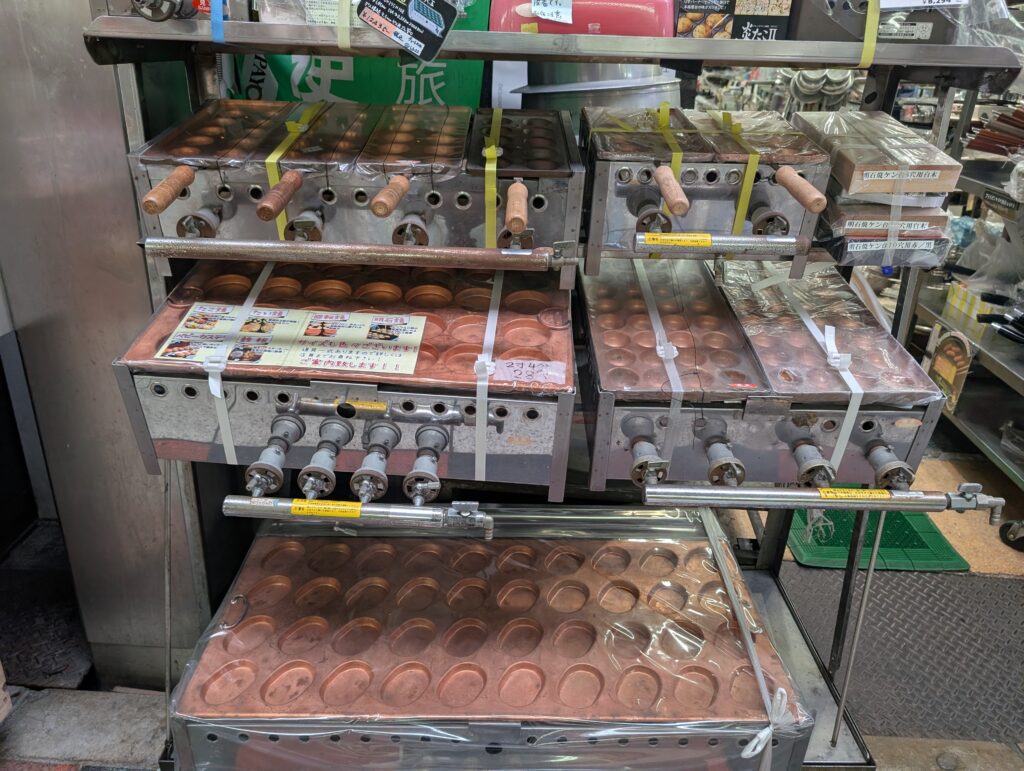
When it comes to Osaka, takoyaki is definitely a must-mention! At Douguyasuji, you’ll find a wide variety of takoyaki makers. From compact sizes perfect for home use to large industrial-grade ones ideal for events and restaurants, there’s something to suit every need. This variety makes it appealing for everyone, from beginners to professional chefs.
In addition to the takoyaki makers, you’ll also discover specialized picks, mixing bowls for ingredients, and even recipe books to help you perfect your takoyaki-making skills. Just strolling through Douguyasuji might inspire you to try making authentic takoyaki at home!
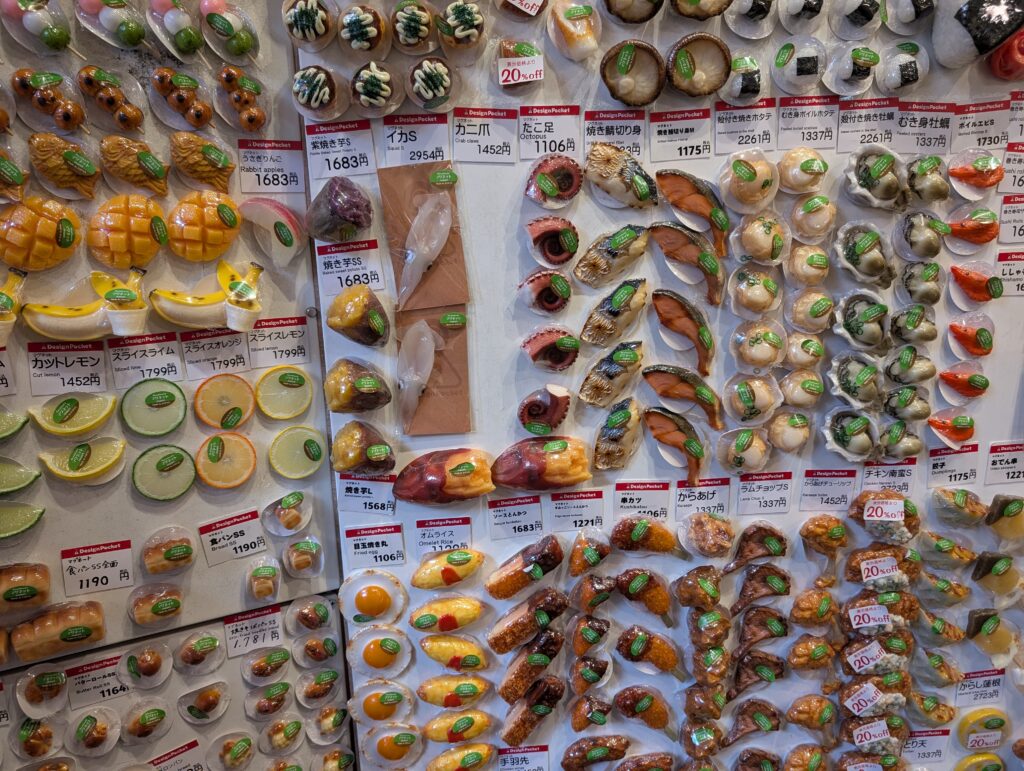
Do you know about food replicas? You may have seen them at Japanese cafés or restaurants. Food replicas are a unique and practical art form that Japan takes pride in. These lifelike food models are often used at the storefronts of eateries to clearly showcase their menus.
Here, you can actually experience making food replicas yourself. They also sell items like food replica keychains, earrings, and magnets. From grilled salmon slices and three-color dango to kushi-katsu and omurice, each one looks so appetizing.
However, since they’re made of wax or synthetic resin, they are not edible.
Where is Doguyasuji?
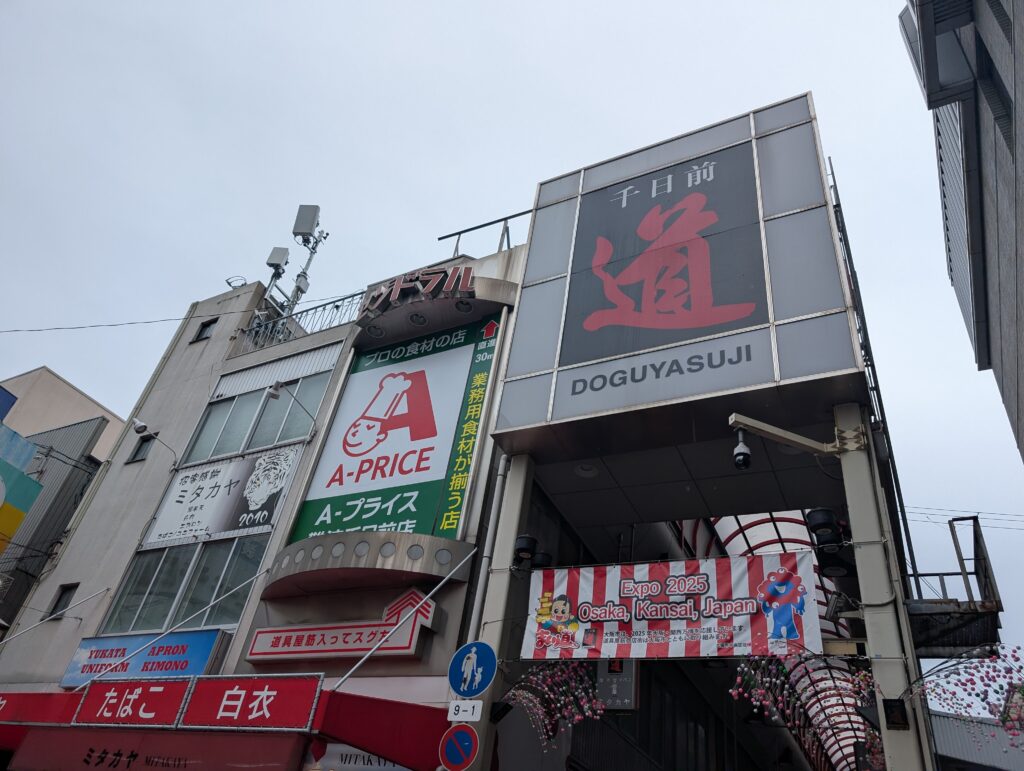
Douguyasuji is located in the heart of Minami (around Namba) and can be reached within a few minutes on foot from Namba Station. It is also a famous tourist destination, attracting numerous visitors daily with nearby attractions like the renowned comedy venue “Namba Grand Kagetsu.”
Its convenient location provides easy access to other popular spots such as Kuromon Market and Shinsaibashi.
How Long Should You Spend at Doguyasuji?
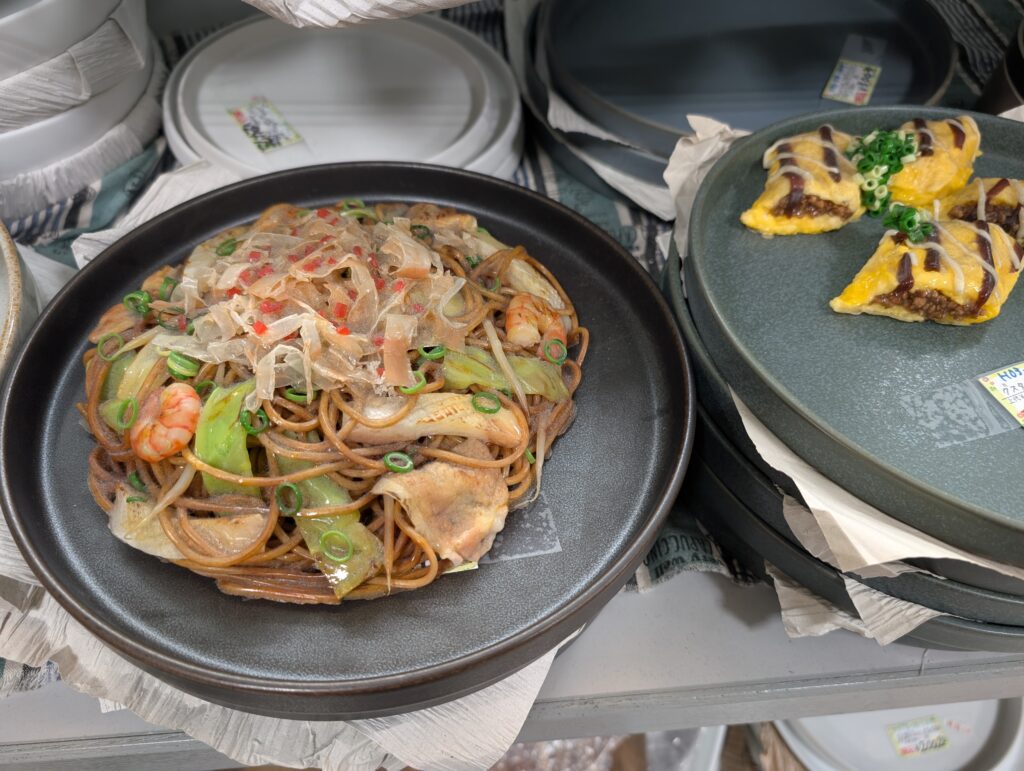
Doguyasuji is a small area located in the heart of Namba. If you don’t plan to experience activities or dine here, you can fully enjoy your visit in about an hour.
Even if you take part in activities like making food replicas or have a meal in this area, I think you can fully enjoy it in about two hours.
Doguyasuji and Nearby Spots

Doguyasuji is an ideal starting point for exploring Namba. By combining it with other attractions, you can enjoy a fulfilling day. For example, after visiting Doguyasuji, why not head to Kuromon Market to enjoy fresh ingredients and local flavors, and then visit Namba Yasaka Shrine to see its unique lion-shaped hall?
After that, you can enjoy shopping at Shinsaibashi-suji Shopping Street while soaking up the Osaka atmosphere. In the evening, a cruise along the Dotonbori River is a relaxing way to admire the beautiful cityscape. With this itinerary, you can efficiently spend your day and fully enjoy the charm of Namba!
If you want to enjoy both Kita (Umeda) and Minami (Namba) in one day, the Osaka Metro Midosuji Line is very convenient. It takes about 8 minutes to travel from Namba to Umeda. You can explore Doguyasuji in Namba, have a meal at Kuromon Market, and enjoy a river cruise on the Dotonbori River. Then, take the Osaka Metro to Umeda and admire the night view from the Umeda Sky Building.
Osaka’s food culture
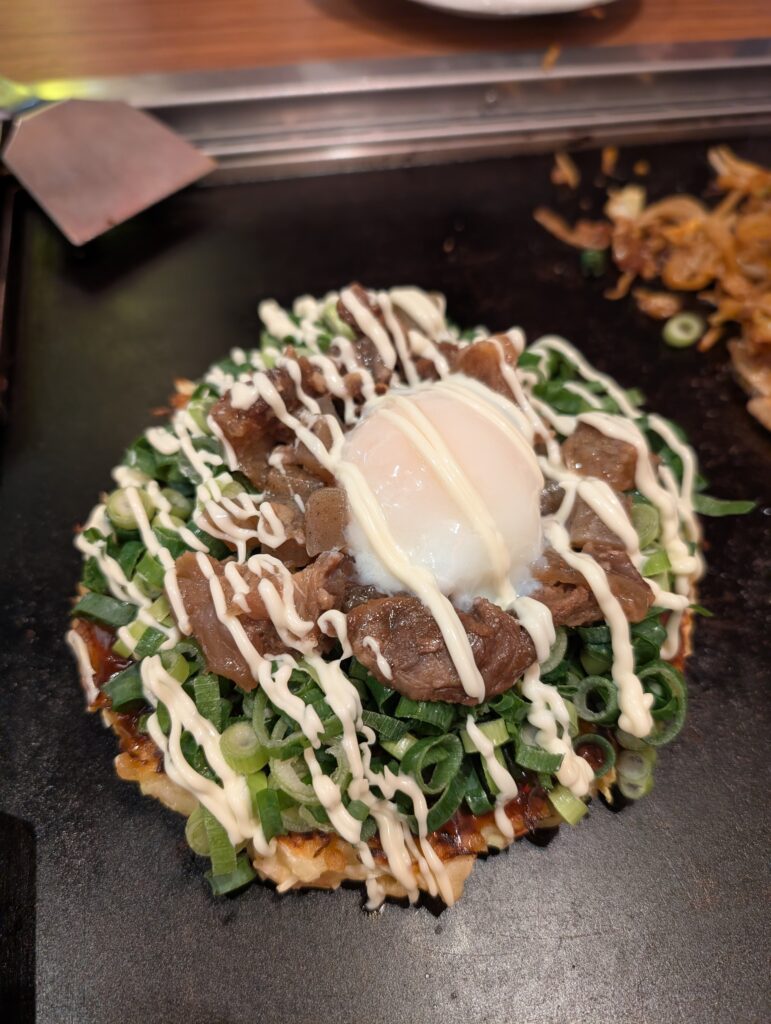
Osaka’s food culture is vibrant and diverse, often regarded as the culinary heart of Japan. Known as “Japan’s Kitchen,” Osaka boasts a rich history of food innovation and street food delights that captivate both locals and visitors. Here are some highlights of Osaka’s food culture:
- Street Food: Osaka is famous for its street food scene. Iconic dishes like takoyaki (octopus-filled batter balls) and okonomiyaki (a savory pancake with various toppings) are beloved staples. Vendors often prepare these dishes right before your eyes, adding to the experience.
- Kuidaore Culture: The term kuidaore literally means “to eat oneself bankrupt.” It reflects the passion Osaka residents have for indulging in delicious food. Whether it’s high-end dining or casual eats, people here prioritize enjoying meals to their fullest.
- Dotonbori District: Dotonbori is the epicenter of Osaka’s food culture. This lively area is filled with restaurants, food stalls, and neon-lit signs, offering everything from kushikatsu (deep-fried skewers) to fresh sushi.
- Historical Influence: Osaka’s location as a historic trading port contributed to its culinary diversity. Ingredients from all over Japan were brought here, leading to the development of dishes that showcase a variety of regional flavors.
- Regional Ingredients: Osaka takes pride in using fresh, local ingredients. For example, udon and soba noodles are often made with Kansai-style broth, which has a lighter flavor compared to other regions.
- Osaka-style Sushi: Unlike the rolled sushi common elsewhere, Osaka-style sushi, or oshizushi, is pressed sushi made with fresh fish and vinegared rice, showcasing a unique preparation method.
Osaka’s food culture isn’t just about the dishes themselves—it’s about the spirit of enjoying food with friends and family. Whether you’re exploring bustling markets or relaxing in a small restaurant, the city’s culinary scene offers an unforgettable experience!

